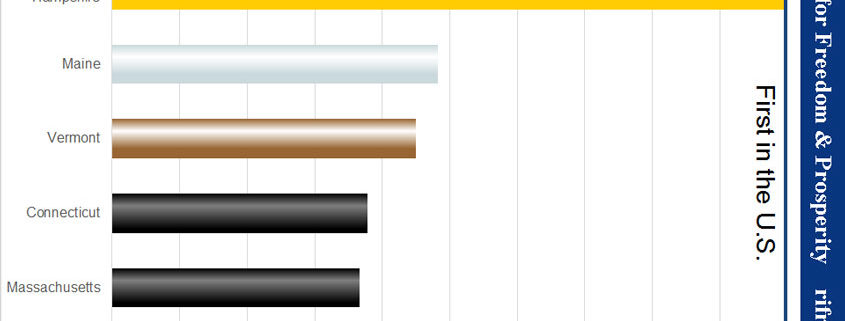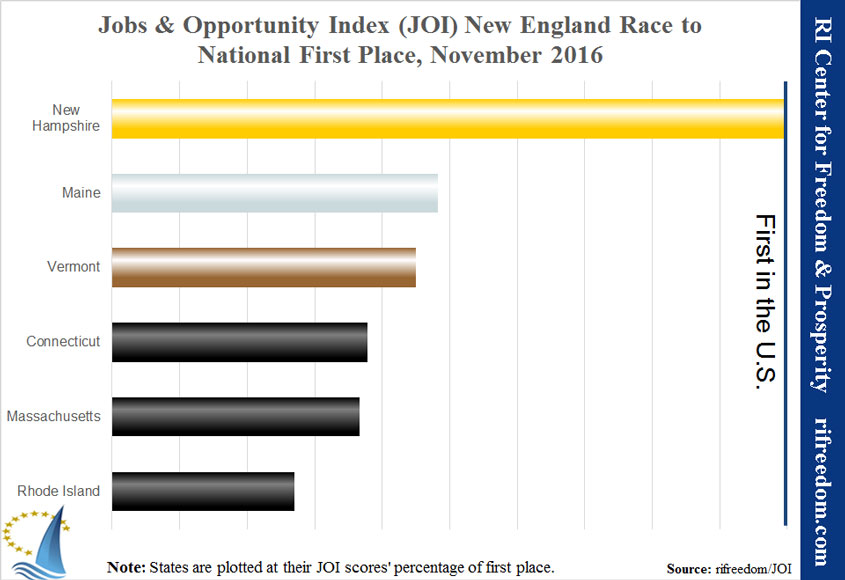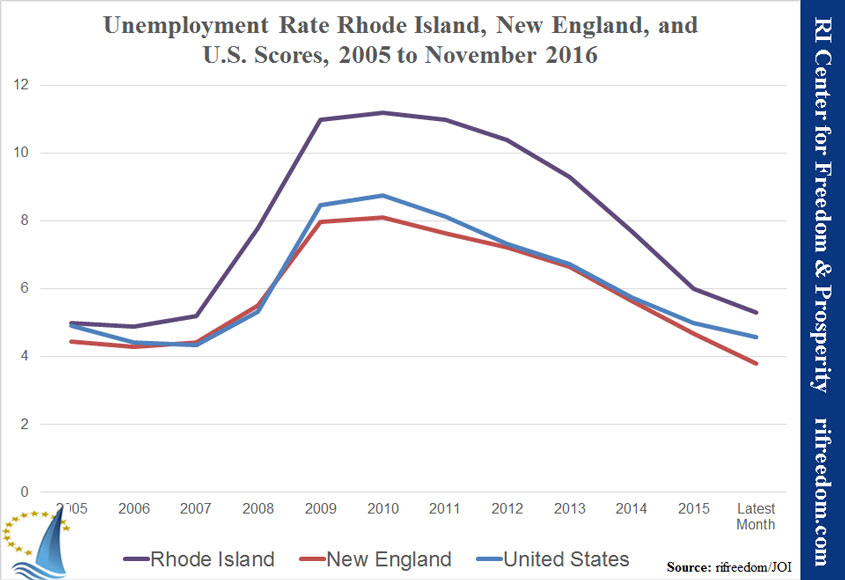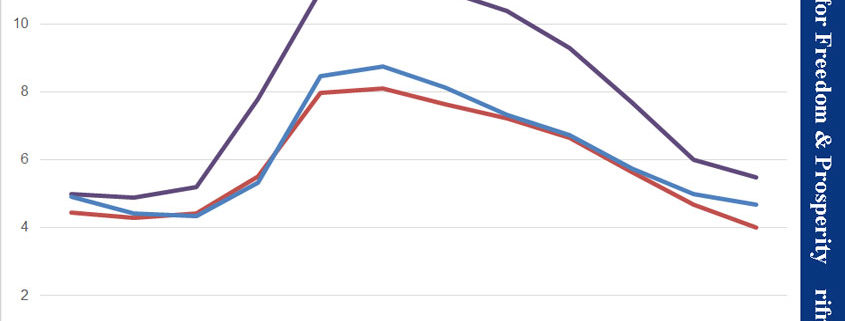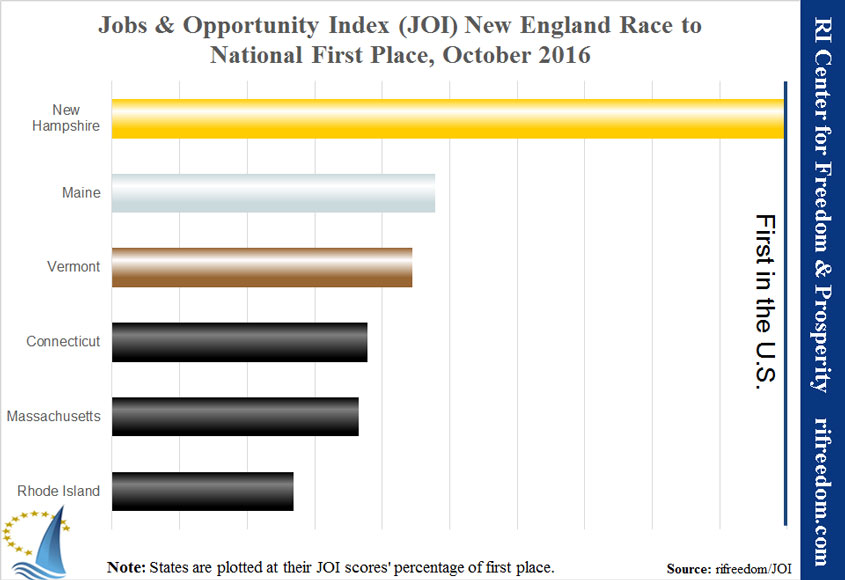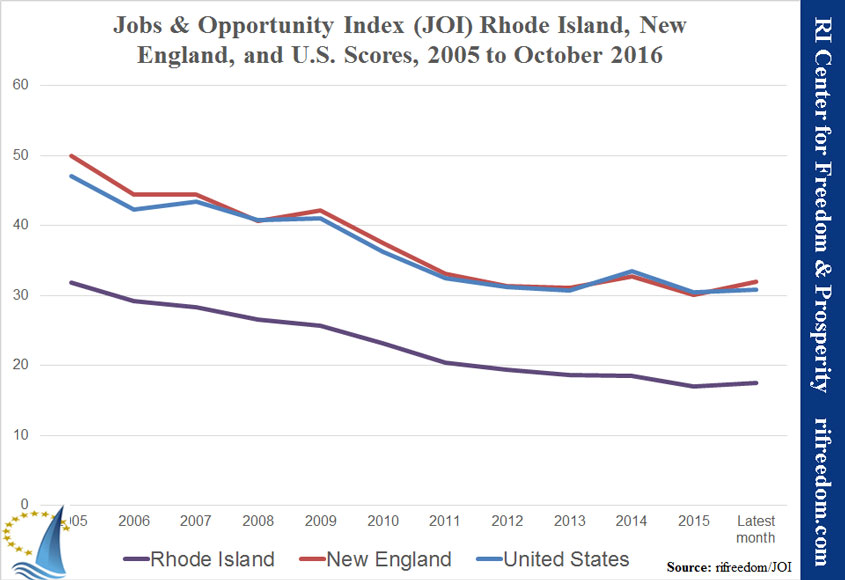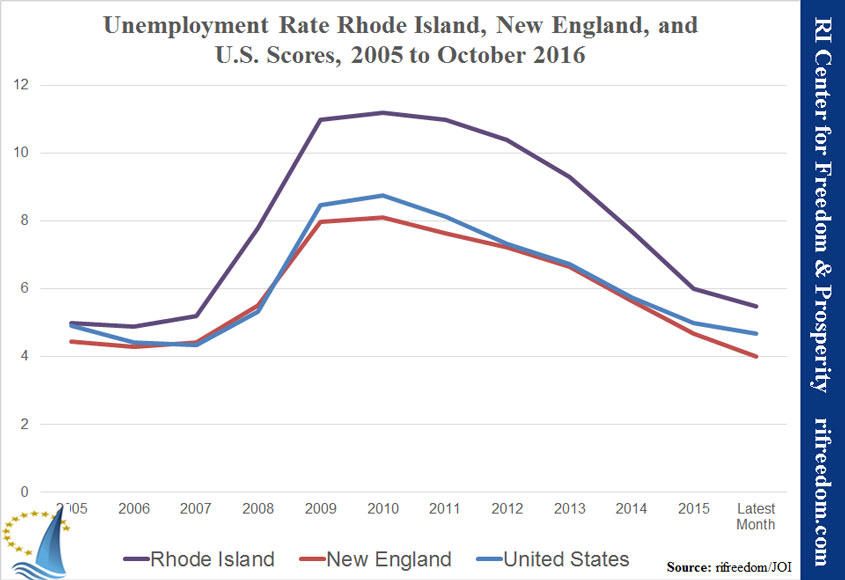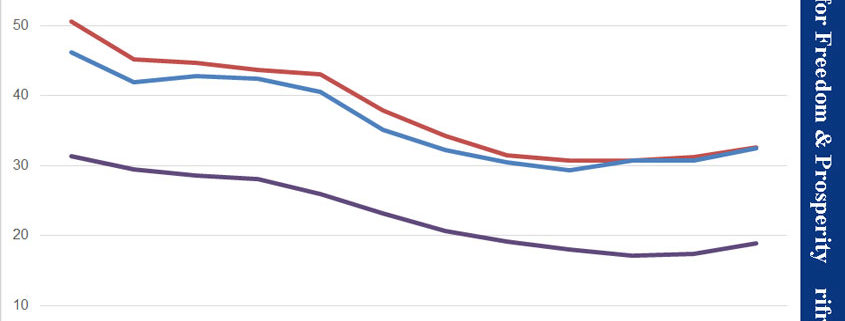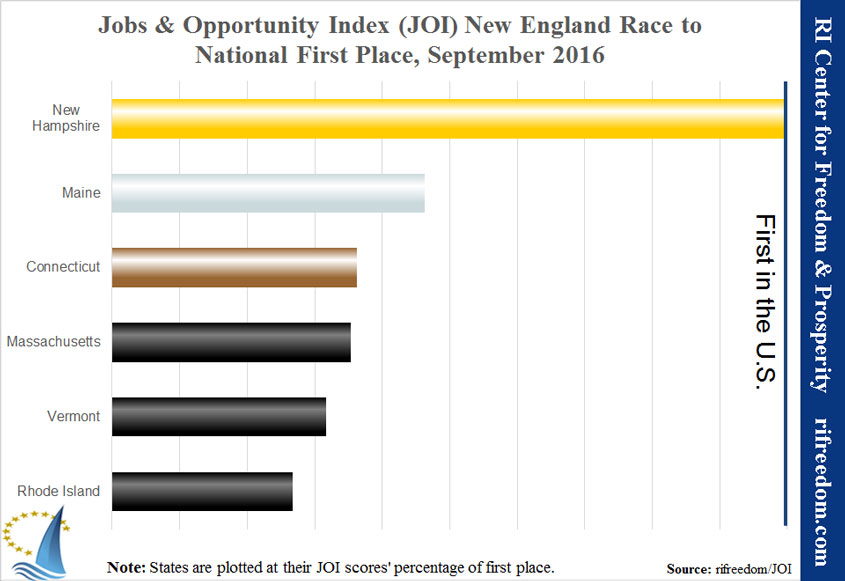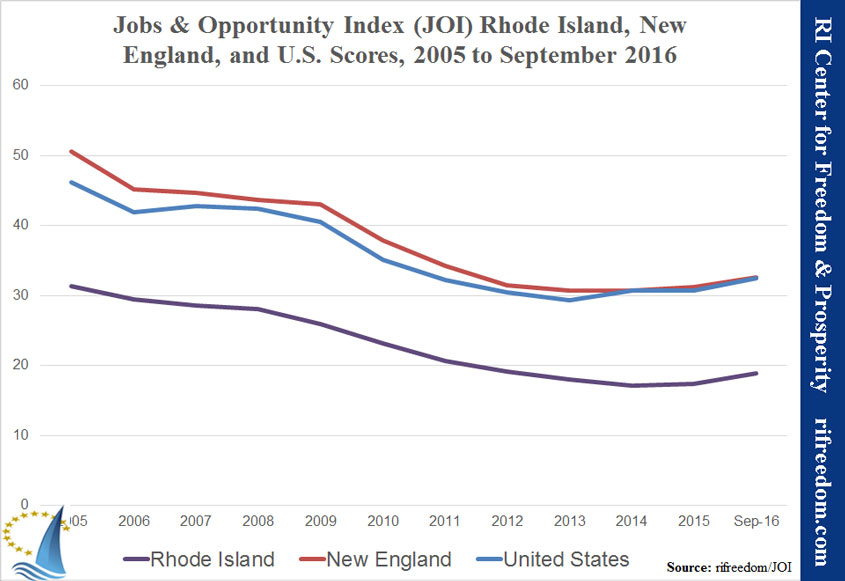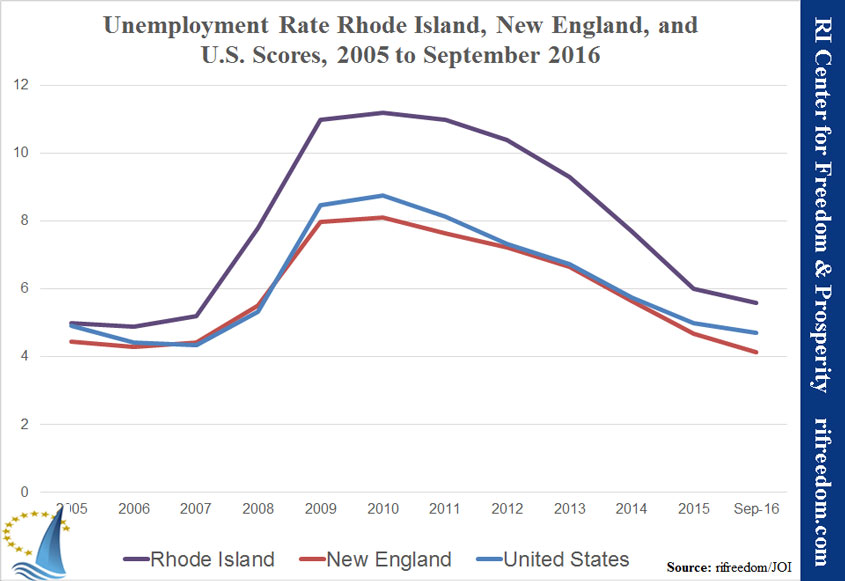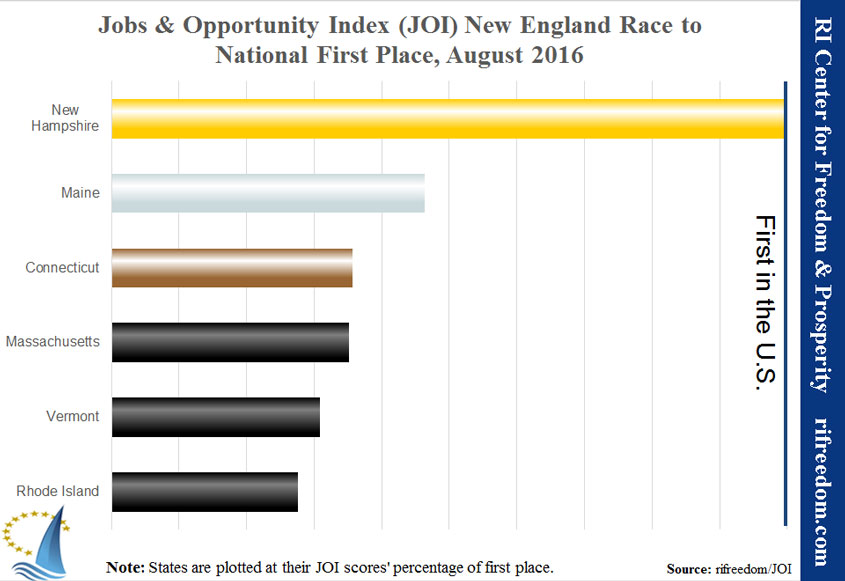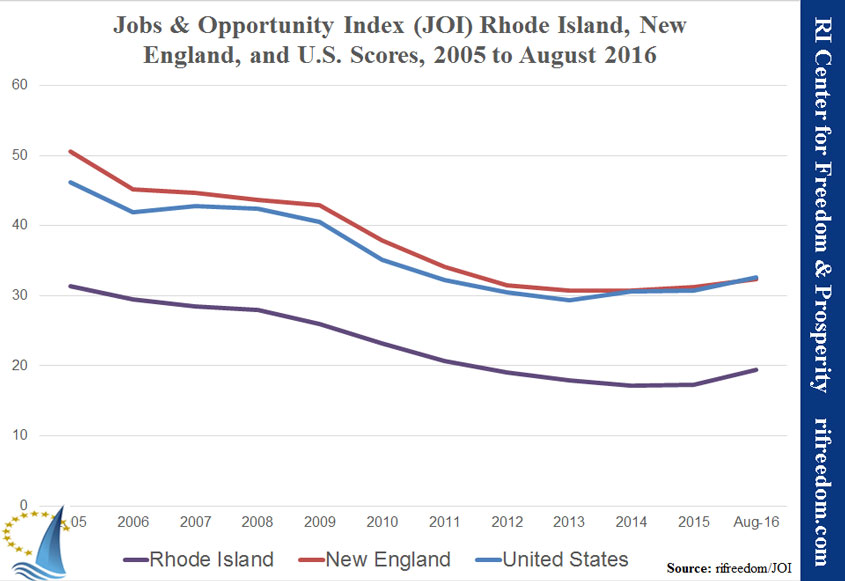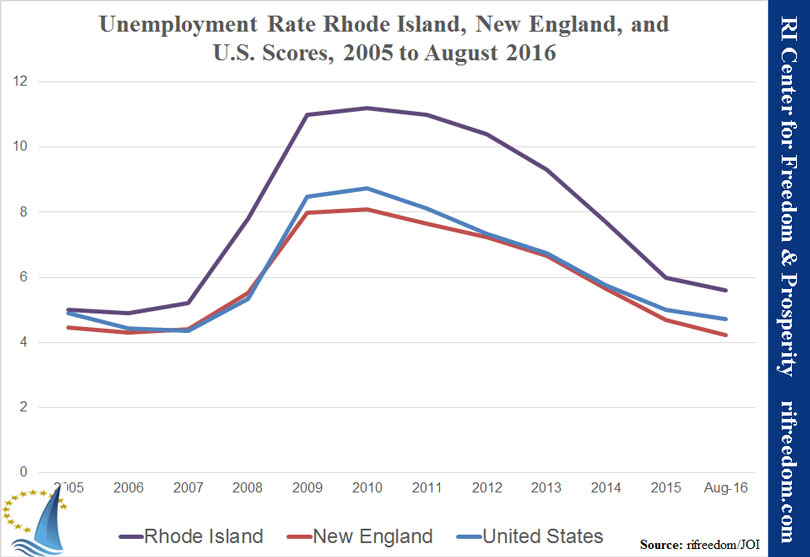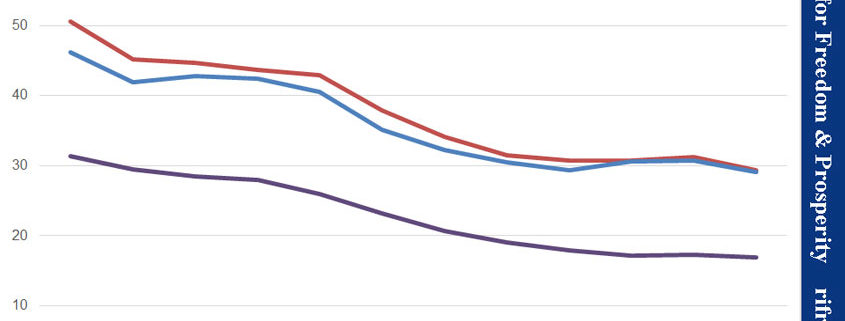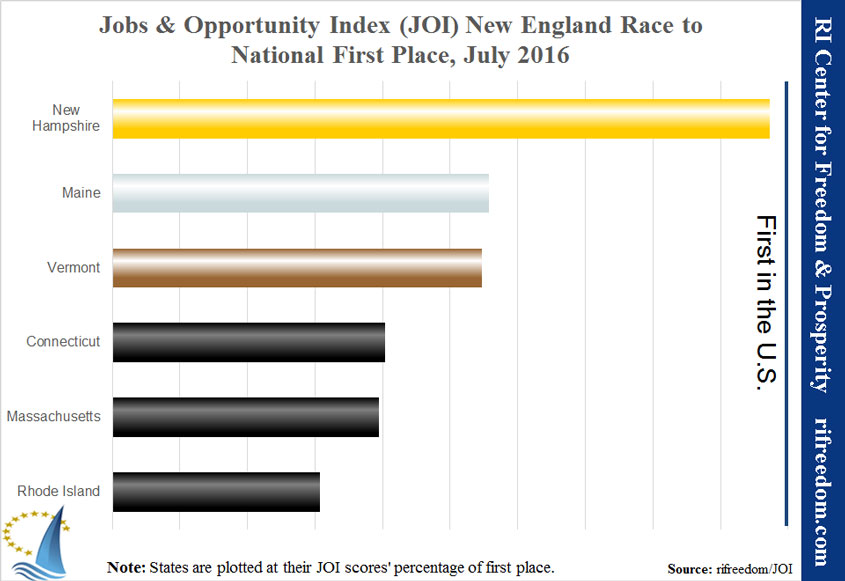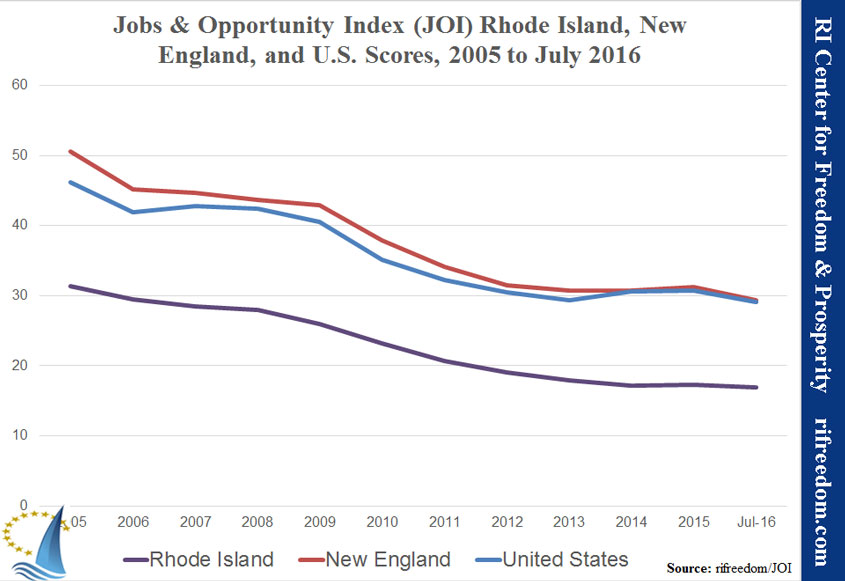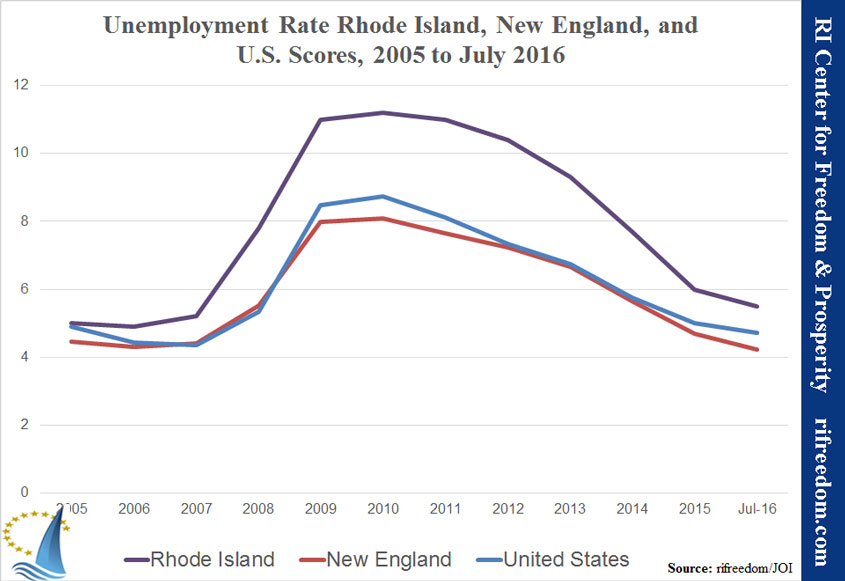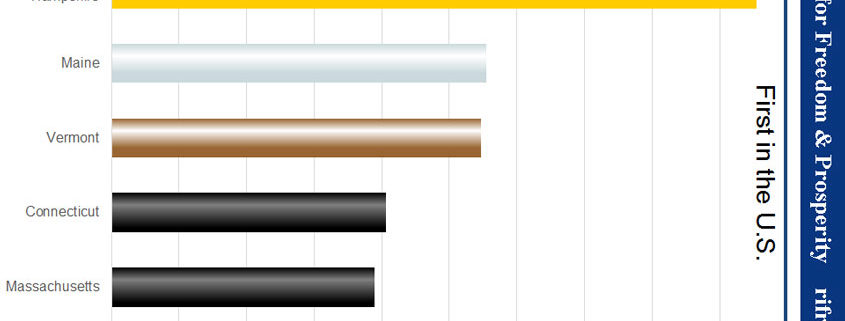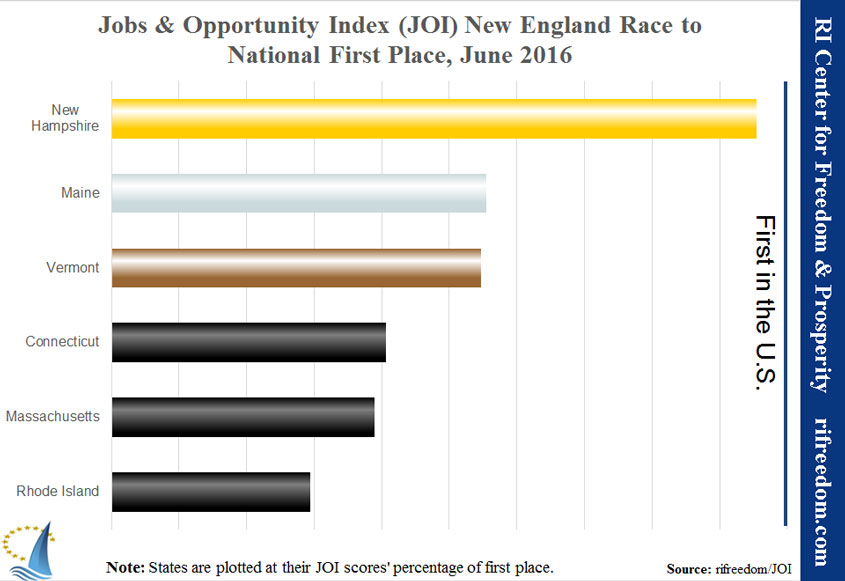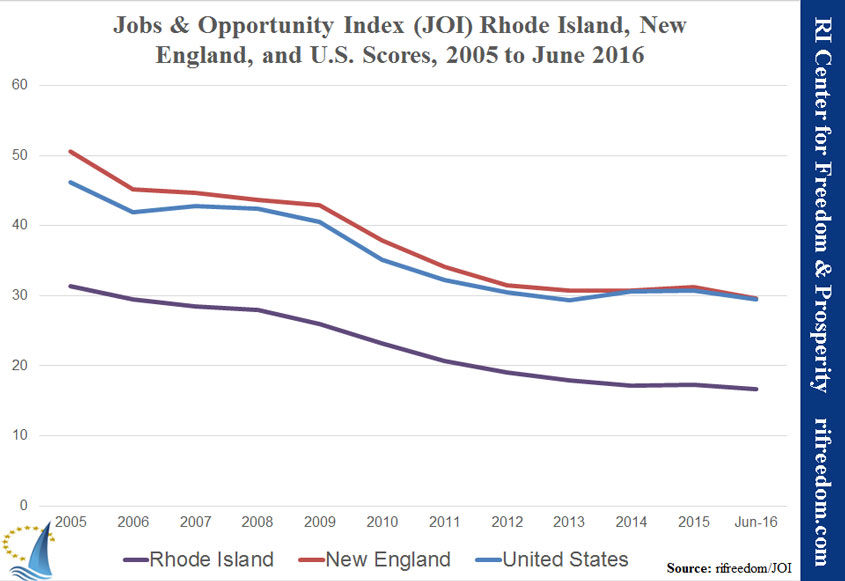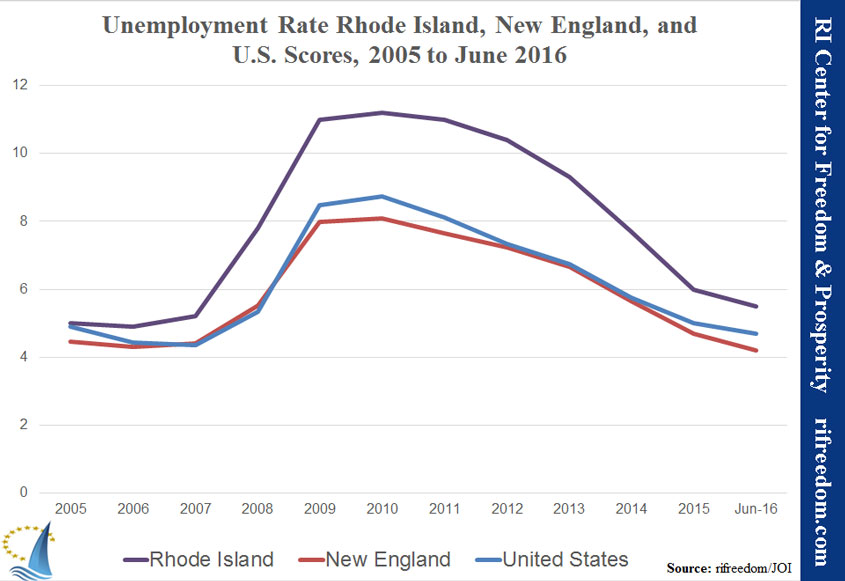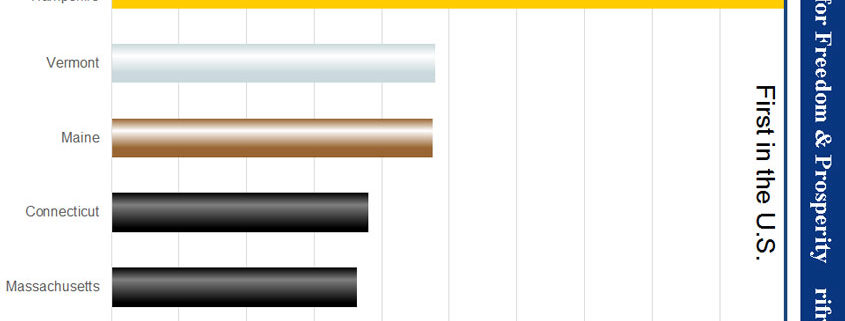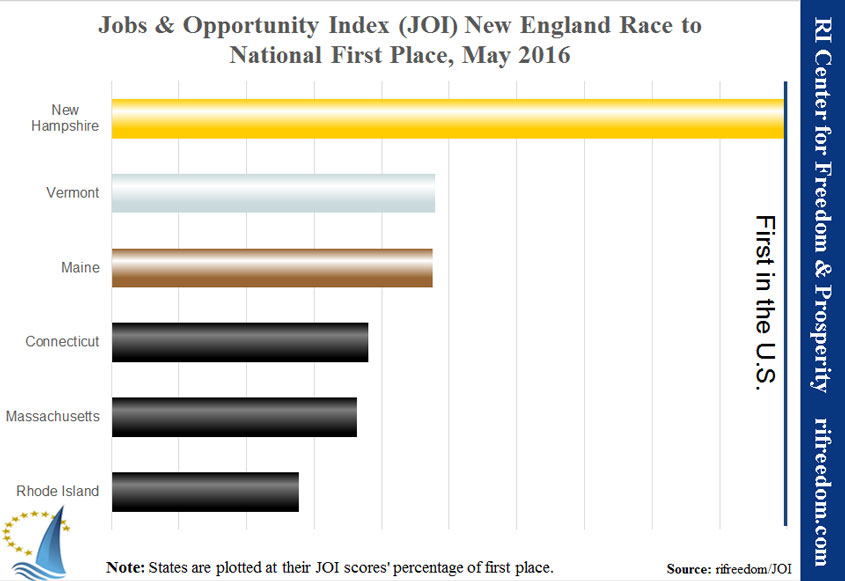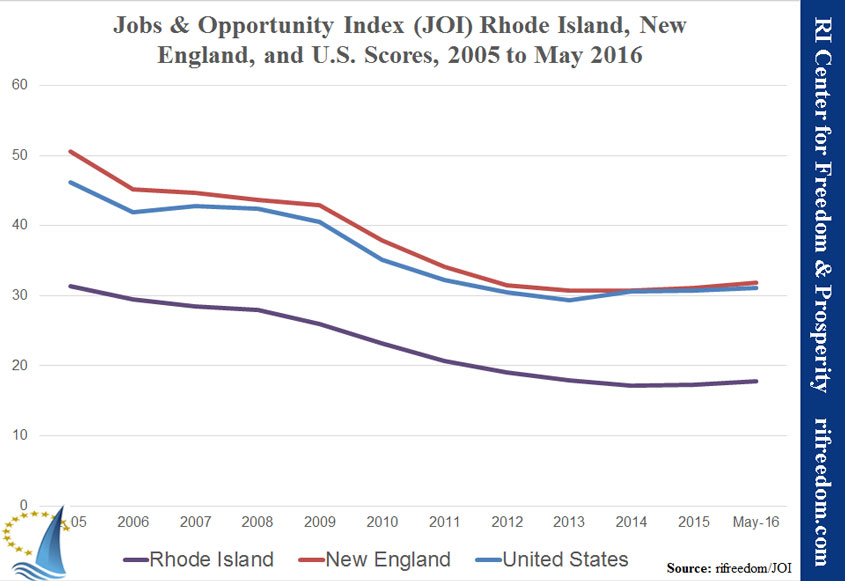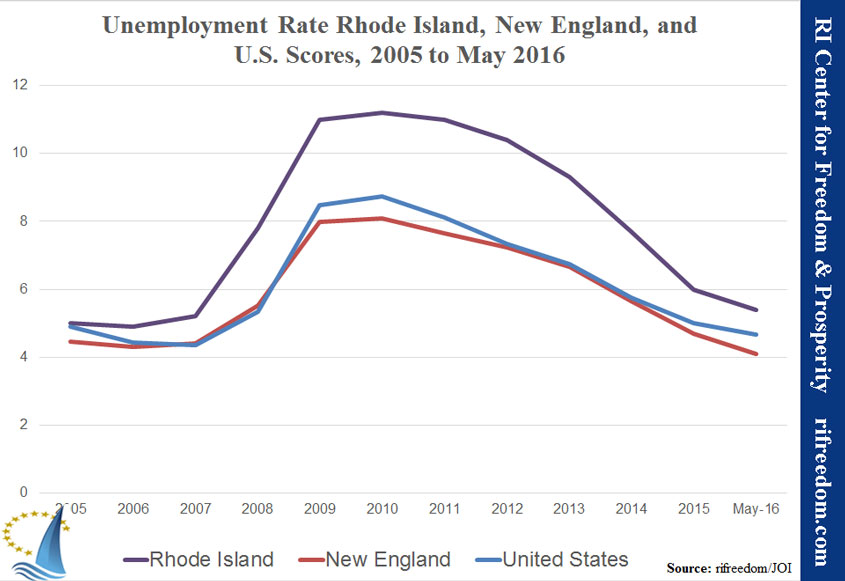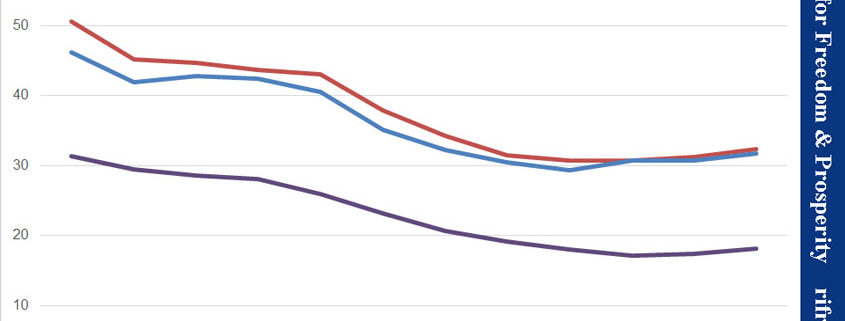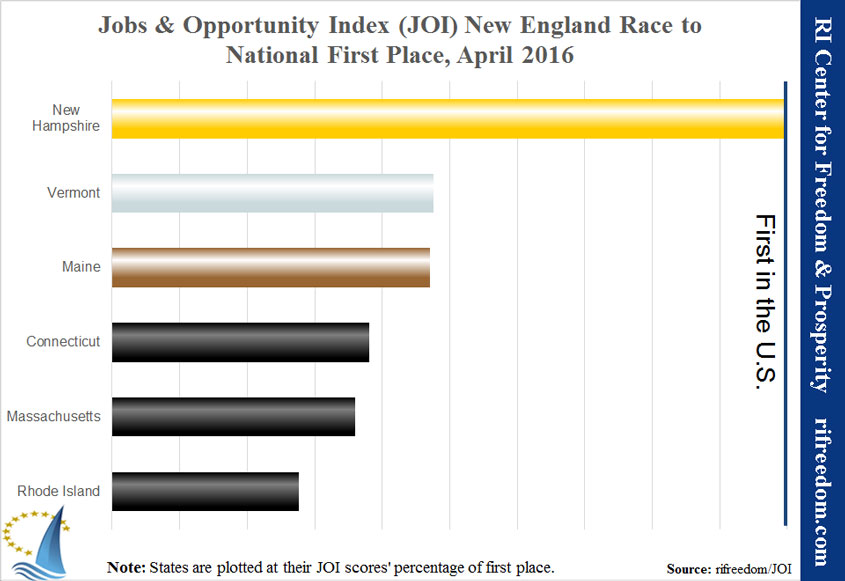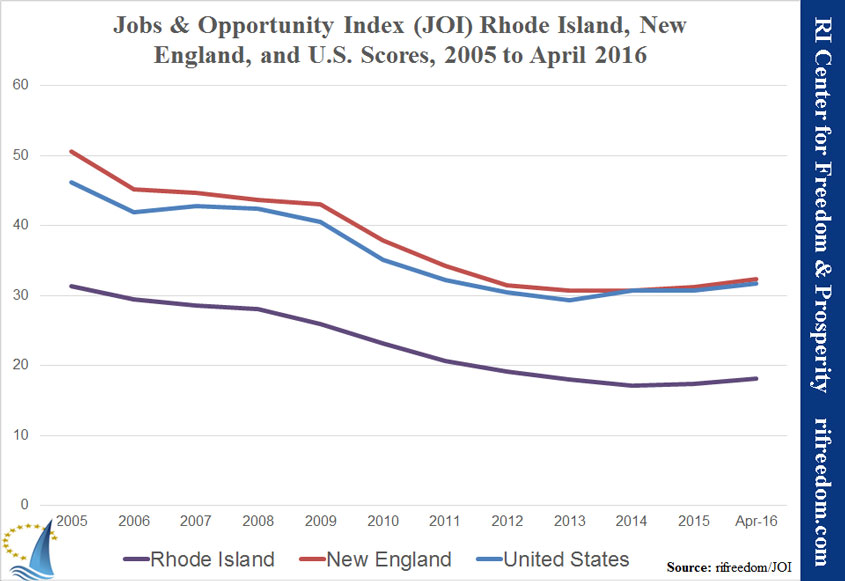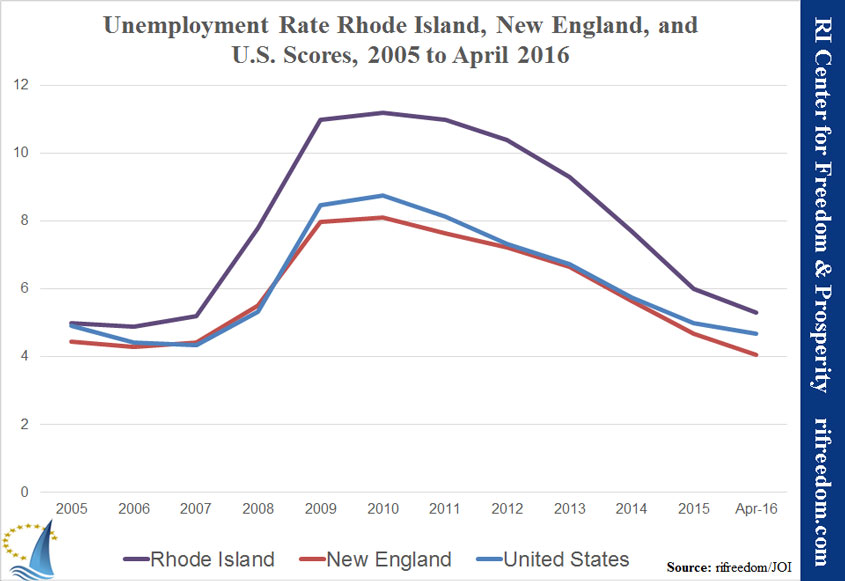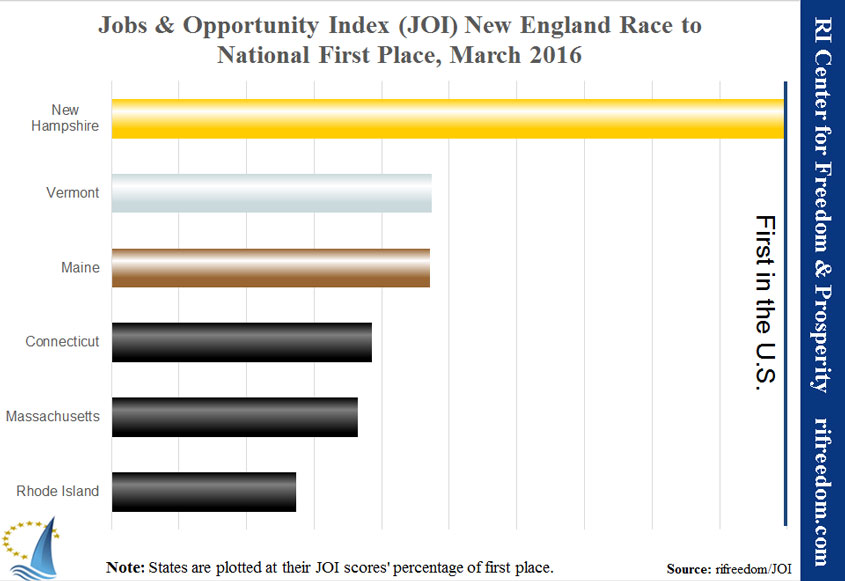Jobs & Opportunity Index (JOI), December 2016: RI Holds Steady Despite Jobs Hit
The preliminary yearend Jobs & Opportunity Index (JOI) report from the RI Center for Freedom & Prosperity shows the Ocean State holding on to 48th place in the country despite a hit to its jobs and employment numbers. In part, this result derived from improved income numbers, which lag by a quarter and may moderate when the full year is included in a final result for 2016.
Eight of the 13 datapoints used for the index have been newly updated. Employment was down 803 from the previously recorded number, while labor force fell 2,199 and RI-based jobs slipped by 600. (Note that these are calculated with pre-revision data for the prior month.) Medicaid enrollment numbers, now available through November, increased by 5,157, perhaps resulting from UHIP and HealthSource RI’s open enrollment period. Within the index that increase was offset by a 2,608 reduction in SNAP enrollment and a 199 reduction in TANF. (Note that these results predate UHIP, which may drive them up when fully functional.) Meanwhile, annualized state and local tax collections were up by $24 million, but personal income was up $802 million.
The first chart below shows Rhode Island still in the last position in New England. As the only two New England states to move in the rankings, Maine and Connecticut managed to increase their distance from Vermont and Massachusetts, respectively. New Hampshire remained 1st in the nation, with Maine a distant second, at 19th, now two places ahead of Vermont, at 21st. Connecticut moved up two to 32nd, outpacing Massachusetts, at 35th.
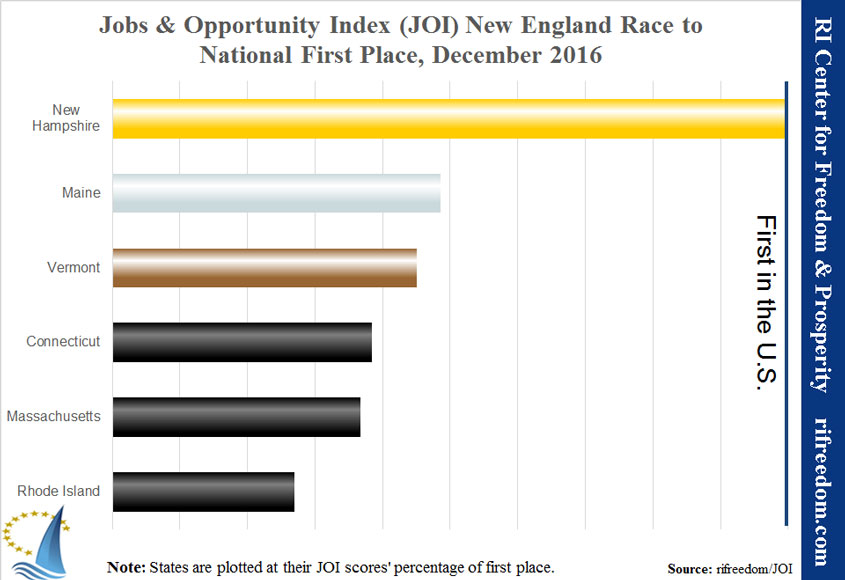
The second chart shows the gap between Rhode Island and New England and the United States on JOI. The Ocean State lost ground against both averages. Rhode Island also lost ground with growing gaps on the unemployment rate (third chart).
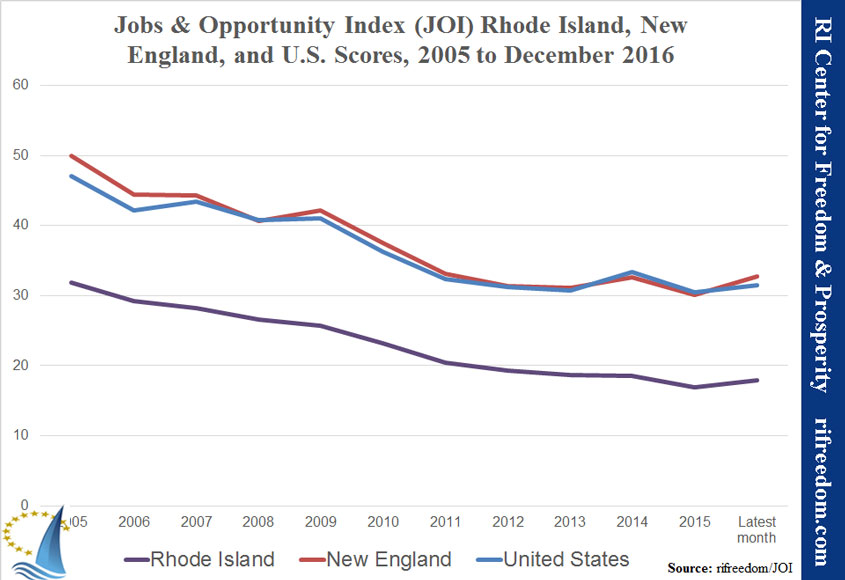
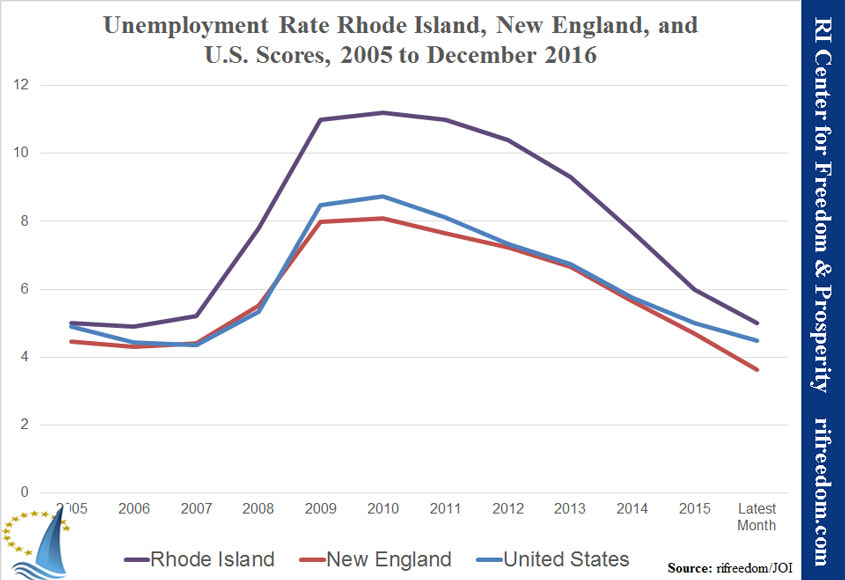
Results for the three underlying JOI factors were:
- Job Outlook Factor (measuring optimism that adequate work is available): RI remained at 39th.
- Freedom Factor (measuring the level of work against reliance on welfare programs): RI remained at 39th.
- Prosperity Factor (measuring the financial motivation of income versus taxes): RI moved up one to 46th.


